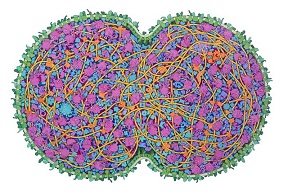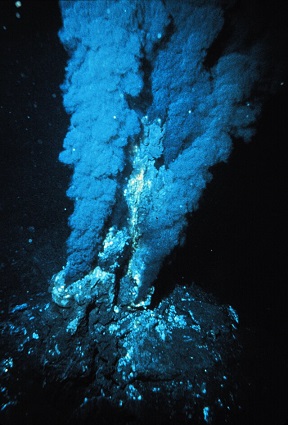One of the avenues researched in the quest for the secrets of life, is the creation of a minimalist life form. What is life in its simplest form? Does it evolve? Does it adapt to its environment? And how did life come into existence?

Life stripped down to its bare essentials
To this subject was devoted a recent article on the website synbiobeta.com. This article recounts the research at the evolutionary biology lab at Indiana University Bloomington by the team of Jay T. Lennon. Their work was published in Nature. What does a minimalist life form look like? What does life look like when it is being stripped down to its bare essentials? This is the research question at this lab. One of the most interesting findings is that even in the simplest life forms, evolution is still at work.
Lennon and his team work with Mycoplasma mycoides JCVI-syn3B, a minimalist life form constructed from a bacterium commonly found in goat guts. Contrary to expectation, this very simple organism still evolves. Mutation rates appeared not to be affected by genome minimization. Yes, the minimized organism wasn’t as fit as the life forms from which it was derived; but this deficit was made up during 2,000 generations of evolution. Both the original cell and the minimal cell evolved – but the minimal cell evolved 39% faster.

Evolution
The authors started from the assumption that such a minimalist life form would not evolve, or at least evolve less than a bacterium found in real life. The bacterium they researched has just 493 essential genes, whereas most animals and plants have 20,000+ of them. In the stripped-down organism, every single gene is essential. And yet, the organism shows remarkable evolutionary progress. The researchers let the bacterium evolve for an equivalent of 40,000 years in human terms. The organism survived and even recovered fitness lost due to its minimalist genetic makeup.
The researchers were amazed at these results. They showed a strong resilience in living organisms; even in organisms in their most elementary form. Apparently, life will evolve, no matter how far it has been stripped back. Could this inspire new views on life? Were the first forms of living matter as simple as the stripped organisms that we created – but did they have the power to evolve nevertheless? And what are the implications for the tasks ahead, like tackling clinical pathogens?
Minimalist life form
In a similar experiment, other scientists created a minimalist life form with just 473 genes. This project was a collaboration between the J. Craig Venter Institute (JCVI), the National Institute of Standards and Technology (NIST) and the Massachusetts Institute of Technology (MIT) Center for Bits and Atoms. They described their findings in the journal Cell. The bacteria-like organism behaved strangely when growing and dividing: it produced cells with wildly different shapes and sizes. But then, scientists identified seven genes that can be added to tame the cells’ unruly nature. They cause them to neatly divide into uniform cells.
The goal of this research is to identify the function of each gene. Put together, this should give a complete model of how a cell works. But the researchers haven’t yet reached that goal. For instance, for the seven genes they added in order to make the cells reproduce neatly, they know just of two genes what their function is; not yet the roles that the other five play. ‘Life is still a black box,’ said Elizabeth Strychalski, one of the researchers involved.
The origin of life
Although such experiments tell us much about the possible evolution of a minimalist life form to a more complex one, they still leave us in the dark about the origin of life itself. The experiments do not tell us whether life was created or grew from non-living matter. In the course of time, evolutionist theories have become more detailed – but still not convincing. For instance, a Berkeley site theorizes that the evolutionary process started with the formation of complex organic molecules, perhaps in volcanic vents in the oceans. Then, RNA molecules formed that could store genetic information, copy itself, and perform basic metabolic functions. Processes that would acquire some stability when cell membranes were formed, sheltering life’s processes from the outside world. Interesting! But still – just a theory. Can we reproduce this process? And, if we reproduce it, will we recognize it?
Interesting? Then also read:
Chemistry vs. bacteria, # 66. The evolutionary arms race
Are mutation rates constant? Evolution theory still in development
Can we engineer life? 2.1 From evolution to revolution
